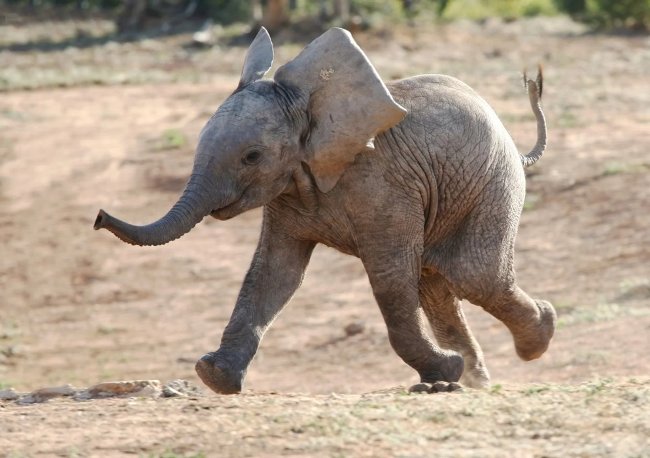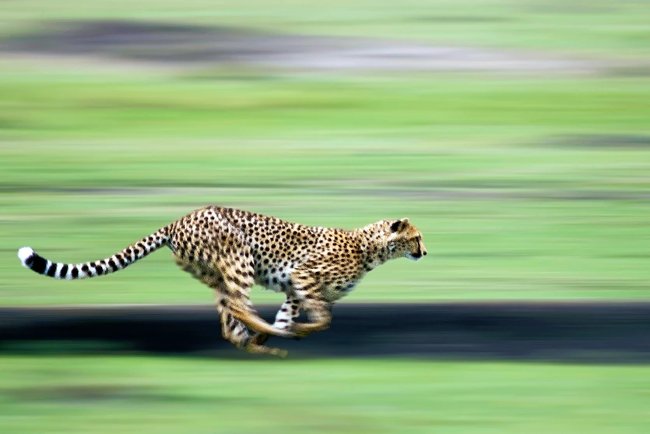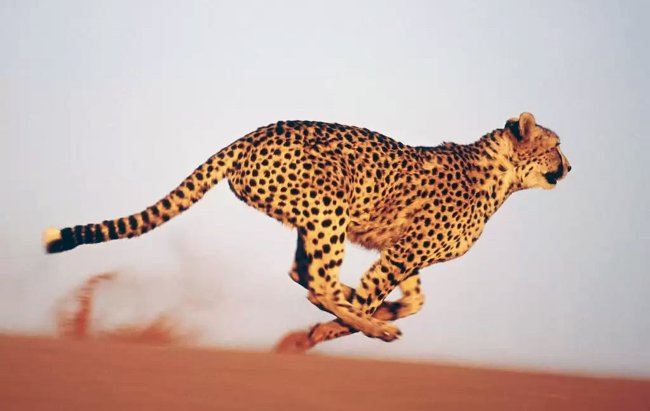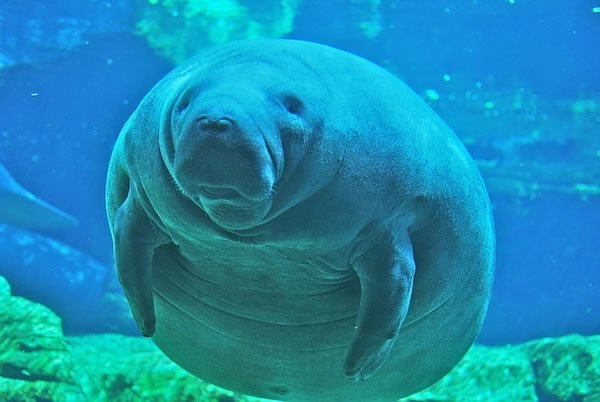Why aren't the largest animals the fastest?
- Why humpback whales or attack killer whales to protect other animals? Here is the answer
- Why does the flamingos stand on one leg forever but don't feel tired?
- The mystery of a giant 1.5-meter-long worm eating both hydrogen sulfide and rotten gas
In the world of all things, the fastest animals often possess a medium-sized body. Newspapers run faster than lions, dolphins swim faster than whales and the Peregrine falcon flies faster than the white eagle.
Owning a larger body does not mean that the muscles are larger and healthier, because there are no clear rules to explain this. So why are the bigger animals not having the advantage of traveling speed?
 Despite possessing the largest, most muscular body of the animal, elephants are not the fastest.Photo source: Four Oaks / Shutterstock
Despite possessing the largest, most muscular body of the animal, elephants are not the fastest.Photo source: Four Oaks / Shutterstock
Now, scientists have discovered a mathematical reason: Based on recent research, animals are limited by the amount of energy they can create to accelerate.
Biological researcher Myriam Hirt of the Center for Biodiversity Research in Leipzig, Germany said: " At the time, the animals with large bodies quickly reached higher speeds, the projected energy Storage available in its body is also quickly depleted '.
"Speed limit"

Myriam Hirt became interested in understanding the relationship between body size and animal speed while conducting a project that required her to estimate the maximum animal speed. " Traditional velocity estimation methods based on body size give ridiculous numbers to animals with the largest body shape. For example, in elephants, based on traditional calculations, The maximum speed it achieved was 373 mph (600 km / h), however, in fact the maximum speed the elephant achieved was only 21 mph (34 km / h) ", Myriam Hirt Reply to Live Science.
Myriam Hirt soon realized that the largest terrestrial animals were not the fastest animals . But when conducting further research, Hirt realized that this computational model could apply to sky-flying animals and aquatic animals.
' This makes me realize that this basic computing mechanism has become a general rule ,' Myriam Hirt said.
Myriam Hirt built a mathematical model to explain this mechanism. Animals reach maximum speeds while running at full speed at a short distance provided with anaerobic levels, meaning that muscle energy comes from limited and short-term reserves. Aerobic metabolism ( aerobic respiration ) - is the process of producing energy when there is enough oxygen. This process can last all day, providing the main energy for body activities, creating more durable strength.

' Body weight must be greater than inertia, so an animal can move, so an elephant cannot run as fast as a mouse. When the elephants began to move, it consumed a large amount of anaerobic energy reserves. As a result, the largest animals never achieve the same running speed as in traditional calculation theory, although their muscular size can be shown to be possible, " Myriam Hirt wrote. in the July 17 report in Nature Ecology & Evolution .
The relationship between body mass and maximum velocity is similar to the Parabolic figure on the coordinate axis: " The velocity increases with the body size to a certain point and then gradually decreases as the body size exceeds the energy. available " .
See also: Top 11 exotic animals you may have heard for the first time
Size and velocity

Biological researcher Myriam Hirt tested her model based on a database of 474 species in the animal world. She found that it predicted maximum velocity to be accurate to 90% in terrestrial, underwater and aerial animals. The remaining 10% explain a variety of issues such as measurement errors, special body adaptations and animal heat sources - whether the animal is warm-blooded or cold-blooded.
Terrestrial warm-blooded animals often run faster than cold-blooded animals , simply because warm-blooded animals can operate regardless of the outside temperature. But strangely, the model seems to be turned upside down when it comes to aquatic animals: " Cold-blooded creatures often move faster than warm-blooded creatures. This is probably because of the creatures. The ocean's hot blood is like penguins and whales, can spend a period of time on land or its ancestors that once lived on land, so those animals can move more slowly than in the water . "
" Although we have a slightly lower maximum speed than Hirt's prediction formula, Usain Bolt - the record holder running at short distances of 100m and 200m - matches the data given. maybe because people are not adapted to external influences, which help the cheetah to run fast, make the spine and joints move flexibly , "Myriam Hirt said.
This new velocity formula can help future studies involving the movement and migration of animals, as well as the interaction between predators and predators. It can also be used to better identify possible extinct animals on how fast they move . According to Hirt's calculations, the Velociraptor dinosaur can reach a maximum speed of 34 mph ( 54.5 km / h ), the T. rex tyrant dinosaur can accelerate up to 17 mph ( 27 km / hour ). and Brachiosaurus dinosaur is 7 mph ( 11.9 km / hour ).
See also: Tyrannosaurus T-rex and Giganotosaurus, which one will win?
Having fun!
You should read it
- What animal is the biggest crybaby in Earth
- 10 strange and unbelievable facts about animals you may not know
- Seven characteristics prove that elephants are extremely intelligent animals
- The world's 10 most endangered animals
- Funny moments of the animals
- Top 11 exotic animals you may have heard for the first time
- Unexpected facts about elephants, animals that communicate with sound waves
- Animal 5D, AR app for animals, made in Vietnam
- Japan officially allows the creation of 'beasts' for organs, will a new 'human' appear?
- 12 species of animals have the strangest vision in the natural world
- 15 animals are most dangerous to humans
- Things to know about dog bears
May be interested

Unexpectedly discover the new unique hermit crab in South Africa

Selecting the right time, rays easily cut giant spider meat

Commercial miscounted with ginseng, the wrong enema with dangerous tonic medicine

Turn the cow into white bone for 15 minutes but the ferocious piranhas still have to be terrified of this creature

The horrifying secret about the scary 'cold blood assassin' in nature is revealed

The unbelievable truth about 'farting' of animals






 The 10 fastest animals on Earth
The 10 fastest animals on Earth What animal is the biggest crybaby in Earth
What animal is the biggest crybaby in Earth This is the fastest dog in the world, only to lose the grouse
This is the fastest dog in the world, only to lose the grouse How to receive Energy Animals & Coins, receive Energy Animals & Coins
How to receive Energy Animals & Coins, receive Energy Animals & Coins Organisms with the largest 'population' on Earth
Organisms with the largest 'population' on Earth The world's 10 most endangered animals
The world's 10 most endangered animals